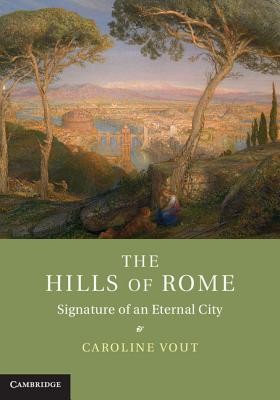
- We will send in 10–14 business days.
- Author: Caroline Vout
- Publisher: Cambridge University Press
- ISBN-10: 1107025974
- ISBN-13: 9781107025974
- Format: 17.3 x 24.9 x 2.8 cm, kieti viršeliai
- Language: English
- SAVE -10% with code: EXTRA
Reviews
Description
Rome is 'the city of seven hills'. This book examines the need for the 'seven hills' cliché, its origins, development, impact and borrowing. It explores how the cliché relates to Rome's real volcanic terrain and how it is fundamental to how we define this. Its chronological remit is capacious: Varro, Virgil and Claudian at one end, on, through the work of Renaissance antiquarians, to embrace frescoes and nineteenth-century engravings. These artists and authors celebrated the hills and the views from these hills, in an attempt to capture Rome holistically. By studying their efforts, this book confronts the problems of encapsulating Rome and 'cityness' more broadly and indeed the artificiality of any representation, whether a painting, poem or map. In this sense, it is not a history of the city at any one moment in time, but a history of how the city has been, and has to be, perceived.
EXTRA 10 % discount with code: EXTRA
The promotion ends in 23d.19:53:01
The discount code is valid when purchasing from 10 €. Discounts do not stack.
- Author: Caroline Vout
- Publisher: Cambridge University Press
- ISBN-10: 1107025974
- ISBN-13: 9781107025974
- Format: 17.3 x 24.9 x 2.8 cm, kieti viršeliai
- Language: English English
Rome is 'the city of seven hills'. This book examines the need for the 'seven hills' cliché, its origins, development, impact and borrowing. It explores how the cliché relates to Rome's real volcanic terrain and how it is fundamental to how we define this. Its chronological remit is capacious: Varro, Virgil and Claudian at one end, on, through the work of Renaissance antiquarians, to embrace frescoes and nineteenth-century engravings. These artists and authors celebrated the hills and the views from these hills, in an attempt to capture Rome holistically. By studying their efforts, this book confronts the problems of encapsulating Rome and 'cityness' more broadly and indeed the artificiality of any representation, whether a painting, poem or map. In this sense, it is not a history of the city at any one moment in time, but a history of how the city has been, and has to be, perceived.


Reviews